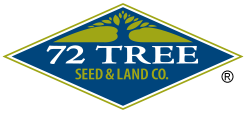Notice: Undefined variable: page in /home/vrxdg1855sn3/public_html/wp-content/themes/72tree/content.php on line 15
Notice: Trying to get property 'ID' of non-object in /home/vrxdg1855sn3/public_html/wp-content/themes/72tree/content.php on line 15
Tree Blowndown Windthrow and Windsnap
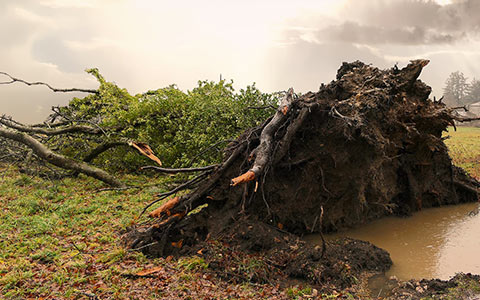
Don’t let your tree die from being toppled in a storm. Knowing how windthrow and windsnap can topple trees will help you increase their natural defenses against it.
72tree.com gathered information on what windthrow and windsnap are, what causes them, and how they can be prevented.
What is Windthrow?
Windthrow occurs when trees are toppled by wind. When windthrow occurs, trees are uprooted as they are blown over.
What is Windsnap?
Windsnap also occurs when trees are toppled by wind. When windsnap occurs, trees are broken off at the trunk as they are blown down.
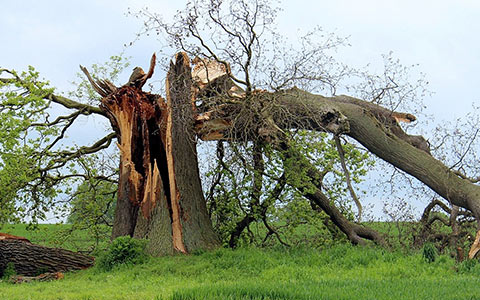
Windthrow and Windsnap Causes
While wind is a contributing factor to windthrow and windsnap, it is not the primary cause (under normal circumstances). Consider the following:
What Causes Windthrow – Windthrow can topple the seemingly sturdiest of trees in the lightest of breezes or most furious of winds. Consider the following conditions that can lead to windthrow:
•Earthquakes can loosen tree roots from their soil, leaving the tree destabilized
• Floods can over-saturate the soil surrounding a tree, leaving roots with nothing to grip
• Excessive rains can also over-saturate the soil around a tree
• Snow accumulation can add enough weight to the tree to overpower its roots
• Construction activities can cause soil compaction, leading to root death
• Deep trenching too close to a tree can sever its roots
• Erosion can strip soil and sediments away from the root plate, leaving roots exposed
• Root rot caused by disease, leaving roots soft and without anchoring power
• Improper watering can cause roots to grow too close to the surface, offering little to no support
Either by nature or neglect, when roots are destabilized, any amount of wind can catch the tree’s canopy, disrupt its balance, and topple it without notice.
Note: A tree’s root plate expands outward from the trunk and continues to its dripline. While roots can grow beyond the dripline, those within it should be nurtured and protected throughout the tree’s life.
What Causes Windsnap – Windsnap brings down trees when the trunk/stem snaps, completely separating the crown and a portion of the trunk from the root system left in the ground. The following conditions can lead to windsnap:
• Sudden severe wind “microbursts”
• Poor trunk and limb development from bad pruning practices
• Diseases that cause hydraulic failure like blight
• Heart rot caused by fungi that feed on the inner wood of the trunk
Another term used to represent both windthrow and windsnap is “blowdown.” This term is usually applied when both windthrow and windsnap occur in the same place. Events that can lead to blowdown include:
•Hurricanes
• Tornadoes
• Typhoons
• Tropical storms
• Hail storms
• Bomb detonations
• Factory explosions
• Volcanic eruptions (pyroclastic flows)
• Meteor impacts or atmospheric explosions
For trees that somehow manage to remain standing after such events, they will likely have been stripped of their leaves and bark, sentencing them to certain death.
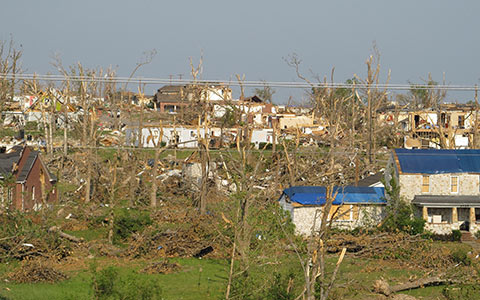
Note: In 1980, the eruption of Mt. St. Helens destroyed more than 4 billion board feet of timber by windthrow and windsnap.
In 1945, an atomic bomb was detonated 2,000 feet over the city of Hiroshima, destroying five square miles of the city and flattening nearly all vegetation. Incredibly, 170 trees survived the explosion within one and a quarter-mile of ground zero, and are alive today.
And in 1908, the Tunguska explosion (believed to have been a meteorite) caused a blowdown of trees within 2,000 square kilometers of forest.
Windthrow and Windsnap Prevention
We can’t stop the weather. Even with all of the technology and advanced warning systems available, we still cannot reasonably predict how severe weather events will affect our trees. The following will help you fortify your trees to keep them from suffering windthrow and windsnap:
Planting – You can best protect your tree by planting it in a location observing the following:
• Plant your tree in a location protected from prevailing winds or known storm paths
• The location should be well-drained and not prone to flooding
• The sun/shade ratio should accommodate the tree species
Be mindful of the structures (fences, sheds, buildings, hills, etc.) and vegetation that surround the tree and can serve as a windbreak.
Read 72tree.com/beginners-guide-tree-planting/ for more tree planting tips.
Watering – Watering your tree is fundamental in encouraging roots to grow deep, offering improved stability and resistance to windthrow:
•Water newly planted trees three to four times per week
• During periods of drought, increase the frequency and duration of waterings
• Do not use overhead watering, it spreads disease, instead, use a drip or soak method
Water benefits every aspect of your tree’s health and long life. Without it, hydraulic failure can cause its fast and untimely death.
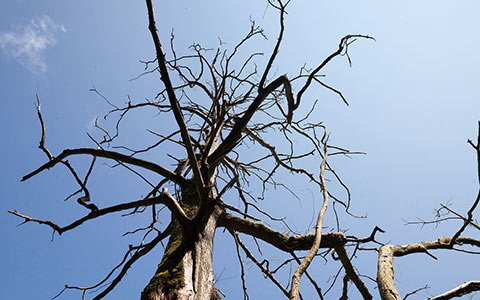
Fertilizing – When planting and each year after that, the soil (principally within the dripline) should be tested to gauge the amount of nutrients and pH level. Liquid, granular, and organic fertilizers can be used to adjust your soil as needed.
Mulching – Mulching the root plate will help the soil retain moisture and regulate soil temperature throughout the year.
Pruning – Proper seasonal pruning will encourage healthy growth and strength of your tree’s structure. Crown thinning will also help prevent blowdown by offering less resistance to wind.
Windthrow and windsnap prevention also depends on keeping your trees disease and pest free. By encouraging their growth and providing responsible seasonal care, trees are capable of fending off most threats. However, when there is a disease or pest outbreak in your region, call an ISA certified arborist to evaluate your tree and recommend preventative measures.
Read more about tree pests and diseases at 72tree.com/5-tree-pests-diseases-avoid-spring/
Windthrow, Windsnap, and Blowdown
In this article, you discovered the difference between windthrow and windsnap, what events can cause them, and steps you can take to prevent them.
By encouraging your trees to grow healthy and well-rooted, you can give them a better chance of surviving severe weather events.
Allowing your trees to grow without proper care and attention can create an opportunity for it to be blown over or snapped, causing catastrophic damages and financial loss when landing on your home or car.
Sources:
canr.msu.edu/news/why_trees_fail
fs.fed.us/r3/resources/health/field-guide/nid/windthrow.shtml
extension.purdue.edu/extmedia/fnr/fnr-faq-12-w.pdf
extension.msstate.edu/sites/default/files/publications/publications/p2683.pdf
space.com/5573-huge-tunguska-explosion-remains-mysterious-100-years.html
pubs.usgs.gov/gip/msh/impact.html
